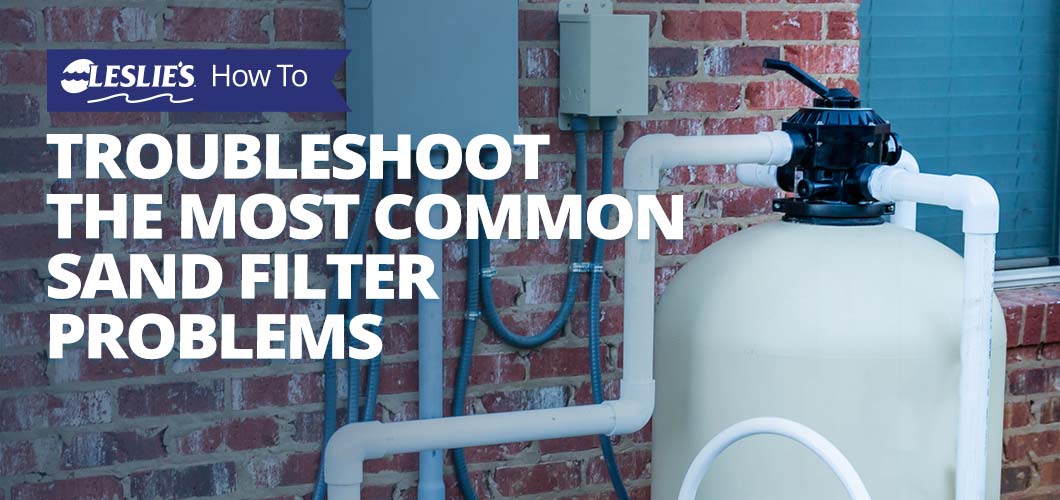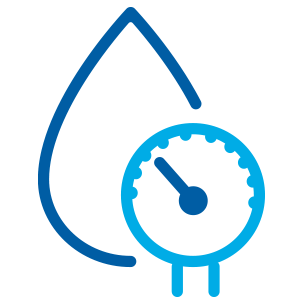
How to Troubleshoot the Most Common Sand Pool Filter Problems
A swimming pool filter is one of the most crucial elements of a healthy pool. If you think of your pool as a body, the filter acts as a kidney, removing all sorts of impurities and debris from the water as it passes through. When your pool's sand filter isn’t working properly, the cleanliness of your pool can take a sharp nosedive. It won't take long until it's not a healthy pool anymore! But what are some of the most common sand filter problems, and how can you solve them? Good news — you're in the right place! If your sand filter is not filtering, keep reading to learn about troubleshooting the most common issues with sand pool filters. We'll also go over the steps you can take to fix the issue.
Leaking Sand Filter

When it comes to leaks, there could be a number of things going on. In most cases, the problem usually stems from a faulty gasket or O-ring. Other common causes include loose nuts or bolts, bad connections, or cracks in the equipment. First, identify where the leak is coming from. We have an article that will help you learn how to find and fix pool leaks.
Carefully inspect your sand filter for cracks in the tank or any individual pieces, and replace as needed. In the case of a cracked tank, the most expensive part to replace, you might opt to purchase a whole new sand filter instead of repairing the problem.
Is the sand filter leaking from the top? Leaks from the multiport valve or backwash line are most common. Leaks here happen when the spider gasket or plunger O-ring wears out. If a minor adjustment to the handle doesn’t fix the leak, replace the gasket and/or O-ring. A worn out drain cap or flange gasket/clamp can also be a source of leaks on a sand filter. Fortunately, they're simple to replace.
PRO TIP: Sand filters are one of the more popular pool filter types because of the low maintenance requirements and lowest purchase price of the three types of pool filters. However, upgrading to a more efficient filter type, such as a cartridge pool filter, has its perks. For starters, cartridge filters have a much higher filtration efficiency of 10–20 microns. Compared to sand's filtration ability of 20–40 microns, that's quite an improvement! Cartridge filters also help conserve pool water, because they don't require a backwashing cycle to clean the filter media — a simple rinse with a garden hose will do.
Sand in the Pool

"Why is my pool filter blowing out sand?" If you recently replaced the sand in your pool filter, or if you just ran a backwash cycle, and notice a tiny bit of sand at the bottom of your pool, don’t be alarmed. This isn’t uncommon for either scenario. But if you’re finding handfuls of sand below the returns, or if sand enters the pool during normal use, this can indicate a filter problem caused by worn, broken, or misaligned internal parts. If there’s a lot of sand in the pool, you likely have a broken lateral or standpipe inside your sand pool filter. In this case, you’ll need to remove all sand from the tank to replace the broken parts. While the sand is out, if your filter is due for new filter media, now's the perfect time to change your filter sand.
Small amounts of sand in the pool could also be caused by a faulty backwash valve, which may need replaced. Having too much sand in the pool filter tank is another cause of sand in the pool — just remove some of it so your filter can operate normally.
High or Low Pressure in Your Sand Pool Filter

If you find yourself constantly dealing with tank pressure issues, it’s possible you’re dealing with a clog, air leak, or improper sand levels.
For low pressure, check for obstructions before the filter. Clear out the pool skimmer, and check the strainer and impeller on your pump to make sure they're not filled with debris. Low water levels or too little sand in the filter can also cause low pressure issues.
With high pressure, backwash the filter first to see if this solves the problem. Pressure will rise when the sand needs to be cleaned. If the time between backwashes keeps getting shorter, it may be time to replace the sand in your filter. Other causes for high pressure include using a pump that’s too strong for the filter, too much sand in the tank, or an obstruction inside (or after) the filter.
Another possibility is a stuck pressure gauge that needs replaced — if functioning correctly, it should read “0” when the pump shuts off.
PRO TIP: If your filter is out of commission, you'll need to take especially good care of your pool to keep it healthy. While waiting for pool filter parts or repairs, you can help keep algae at bay by keeping chlorine levels between 2.0–4.0 ppm, brushing and skimming your pool daily, and circulating the pool on the filter bypass setting. If you have a robotic pool cleaner, you can use it as a filtration substitute until water starts moving through the filter once again.
Pool Pump Works on Recirculate, But Not on Filter Mode

This issue is one of the most frustrating problems pool owners face with their pool pump. Luckily, the reason is usually due to one of a few causes. Long story short, you're likely dealing with some sort of blockage or an air leak.
Clear the filter or plumbing blockage
First, clean out the skimmer and pump baskets to ensure there isn't debris impeding water flow. Second, check to make sure the filter is clean — a dirty filter can increase pressure and decrease flow rates. Finally, assess the condition of your filter media. The older your sand media gets, the more clogged up with oils and calcium scale it can become. If your filter is due for new sand, replace it to see if this alleviates the problem. While the sand is out of the tank, carefully inspect all internal components to make sure they're not cracked or damaged, as this can also impact the flow of water through the filter. Check the standpipe, laterals, and the baffle/diffuser to make sure there's no sand caught inside.
Find and fix the air leak
More often than not, the source of your flow rate trouble is because of an air leak. The pump runs for a while, maybe 10–20 minutes or an hour, but then you lose return pressure or the pump loses its prime. This is because an air leak is bringing water into the filter to accumulate. As the air pressure builds inside the tank, there's eventually enough back-pressure to start causing flow issues from the pump. Since "Recirculate" mode bypasses the filter, this explains why you only notice a problem when it's set to "Filter." If you look closely, you may also notice air under the pump lid or bubbles emerging from the returns. Address the source of the leak to fix the problem.
A Final Note on Sand Filter Troubleshooting & Repairs
Before getting started with any pool equipment repair, it's important to check the owner’s manual. Although most of these problems are simple to fix on your own, some manufacturers will void the warranty if anyone but a professional makes the repair. Nonetheless, filter repairs need to be made as soon as possible to keep your pool pristine.
No matter the issue with your sand pool filter, you can always count on the experts at Leslie's to help. Whether you're a DIY'er in search of new filter parts, or a pool owner needing help with troubleshooting and repairs, we've got you covered. Call or stop by your local Leslie's today, or schedule an appointment online with one of our knowledgeable repair technicians.